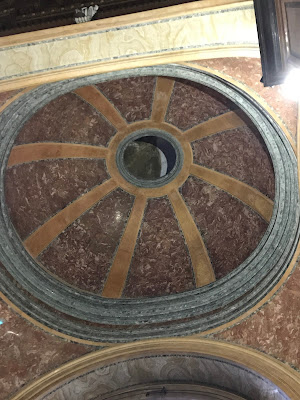
The plastering technique known as scagliola was developed in the Italian Baroque period and is made from a careful mixture of natural materials including gypsum, lime and raw pigments. A special "mother glue” and Bees wax is added to create the intense colors and patterns that mimic the look and complexities of marble, semi-precious stones, mosaics and inlaid stone. The process is laborious, complicated and stunning when complete. The unwritten and secretive technique is taught from master craftsman to student via workshops and apprenticeships, and this is how I learned the process. I have taken this traditionally decorative technique and transformed it into an artistic process that adds the sculptural to my previously two dimensional work.
Stills from a little video of process coming out soon!




































